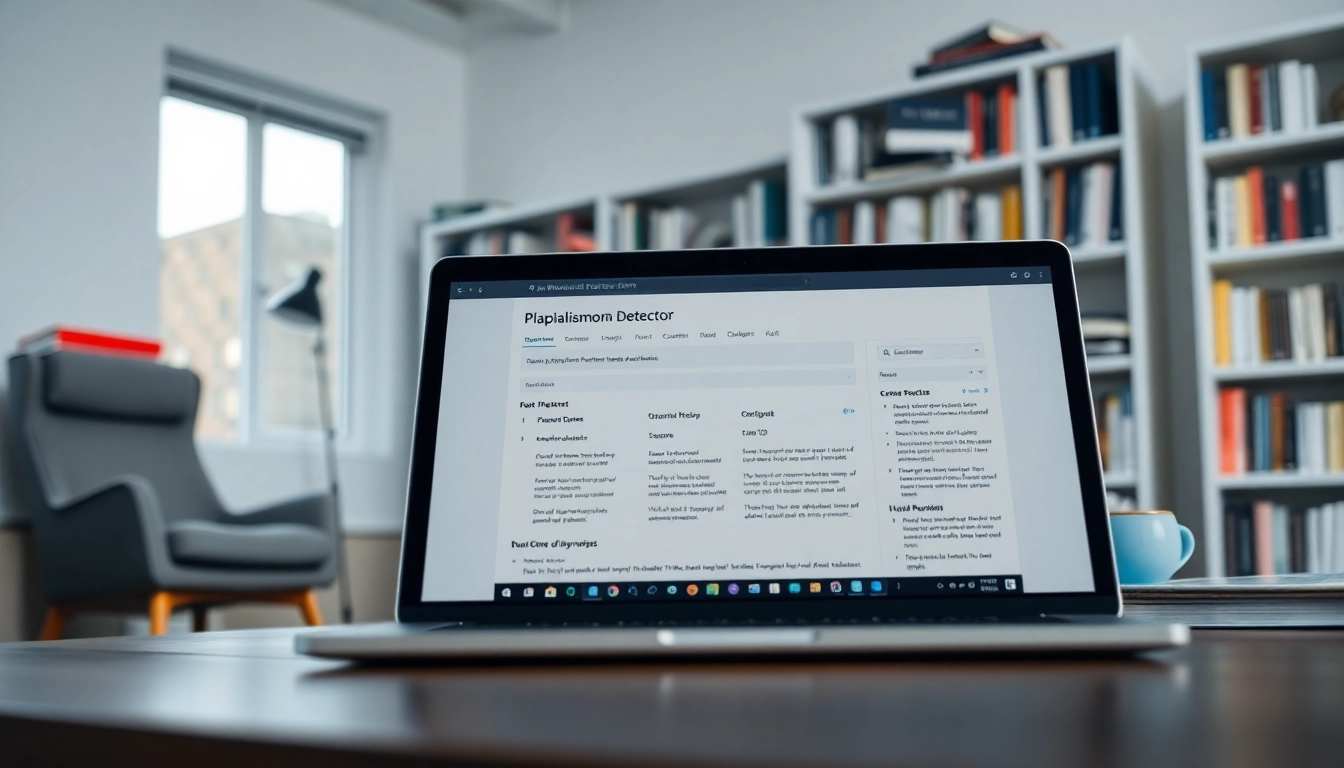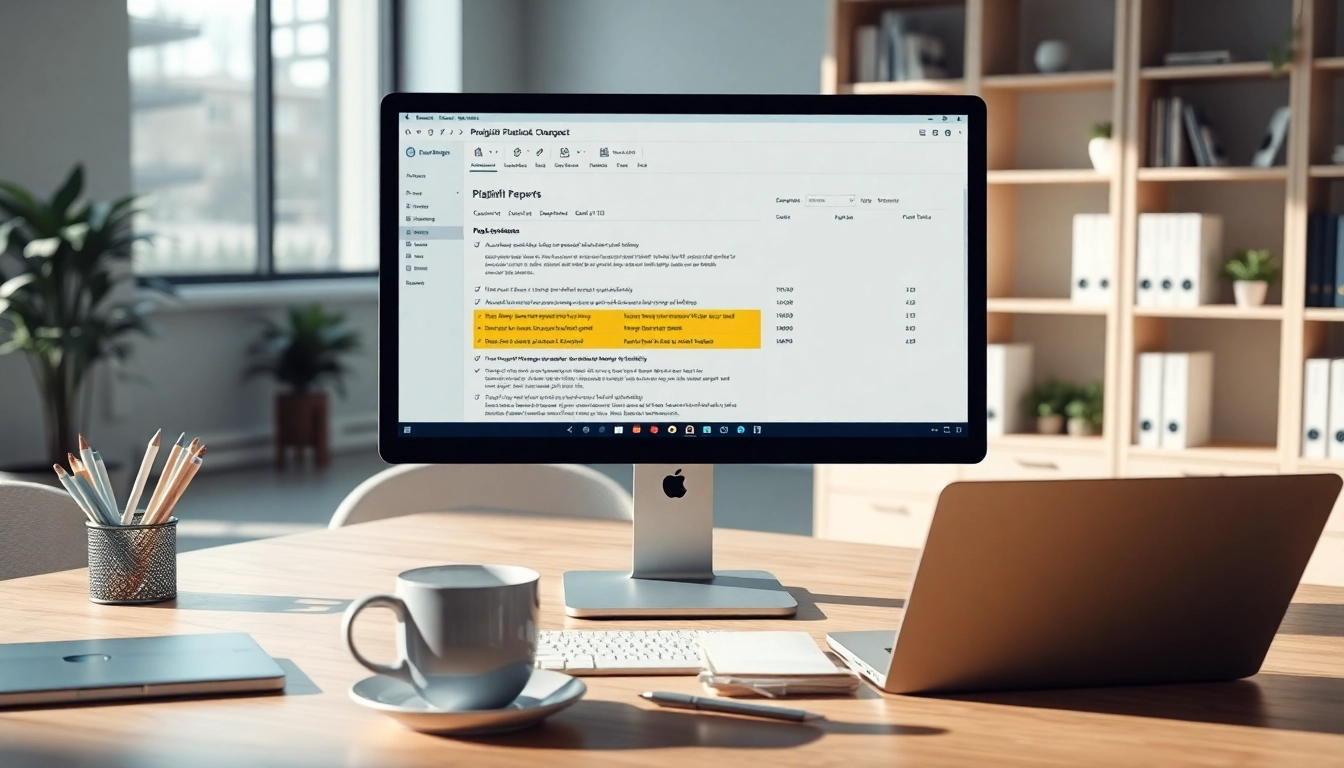Understanding Plagiarism Detectors
What is a Plagiarism Detector?
A plagiarism detector is a vital tool used to identify instances of copied content across various sources. By analyzing a submitted document, these detectors compare the text against a vast database of existing works, including academic papers, online articles, and other published materials. The primary goal is to ensure that written content is original and free from unauthorized duplication. In today’s digital age, where information is abundantly available, utilizing a plagiarism detector is essential for students, educators, and professionals alike. These tools can vary significantly in features and accuracy, making the right choice crucial for maintaining integrity in writing.
Types of Plagiarism Detectors Available
Plagiarism detectors can be primarily categorized into two types: free and paid services. Free plagiarism detectors are often limited in their capability; they typically offer basic features and may have restrictions on document length or file types. Examples include tools like DupliChecker and Grammarly’s basic offerings.
Paid plagiarism checkers, on the other hand, usually provide more comprehensive services, allowing users to check lengthy documents with greater accuracy. Services such as Turnitin and Copyleaks offer advanced algorithms and vast databases, making them more suitable for academic institutions and professional writers.
How Plagiarism Detectors Work
Plagiarism detection technology employs sophisticated algorithms to sift through written content, searching for similarities with existing material. Most detectors utilize an extensive database of online texts, research papers, journals, and books. When a document is submitted, the detector breaks the text down into smaller sections, which are then compared to this database.
There are various techniques used in this process, including:
- String Matching: This involves checking the document for exact matches of phrases and sentences.
- Fingerprinting: The detector identifies unique patterns in writing styles, capturing the essence of the content and comparing it against the database.
- Citation Analysis: Determines if proper citations are made for any quoted or paraphrased material, which helps distinguish between acceptable and plagiarized content.
Importance of Using a Plagiarism Detector
Academic Integrity and Plagiarism Detectors
Maintaining academic integrity is a crucial aspect of educational institutions. Plagiarism can have severe repercussions, including failing grades, academic probation, or expulsion. Plagiarism detectors serve as watchdogs that help enforce these standards, allowing authors to verify the originality of their work before submission. Institutions increasingly require the use of such tools to foster honest academic practices and combat dishonest behaviors.
Benefits for Students and Educators
For students, utilizing plagiarism detectors provides an assurance that their work is original, thus safeguarding their academic reputation. It allows students to detect unintentional plagiarism that may arise from improper citation practices or unintentional paraphrasing.
Educators benefit in similar ways, as they can evaluate students’ work with greater confidence, knowing that they have tools to identify and address plagiarism effectively. Moreover, educators can use these tools as teaching aids to instill proper citation practices in their students.
Preventing Unintentional Plagiarism
Unintentional plagiarism is one of the most common pitfalls for writers. This often results from a misunderstanding of how to properly paraphrase or cite sources. A reliable plagiarism detector can help identify these issues before the document is submitted. It outlines the specific sections that may need revision or citation, allowing the author to correct these mistakes proactively.
Key Features of Reliable Plagiarism Detectors
Accuracy and Performance Metrics
The accuracy of a plagiarism detector is paramount. A reliable tool should not only identify direct plagiarism but also recognize paraphrased content. Performance metrics to consider include the percentage of similarity detected, the number of sources referenced, and the tool’s ability to differentiate between common phrases and actual copied content.
User-Friendly Interface
The usability of a plagiarism detector can significantly affect user experience. A well-designed interface allows users to navigate easily, upload documents promptly, and interpret results effectively. Features such as drag-and-drop functionality, mobile access, and clear reporting can enhance the overall experience for users across various tech proficiency levels.
Integration with Other Tools
Integration capabilities are crucial for users who rely on multiple tools for their writing process. Many high-quality plagiarism detectors integrate seamlessly with word processors, learning management systems, and citation tools. This interoperability enhances productivity and allows for a more streamlined workflow, ultimately making the writing process more efficient.
How to Choose the Right Plagiarism Detector
Comparing Features Across Tools
Choosing the right plagiarism detector entails comparing the features offered by different services. Important features to evaluate include:
- Database size: A larger database enhances the likelihood of detecting copied content.
- Supported file formats: Make sure the tool can handle the document types you typically work with (e.g., PDF, Word).
- Reporting style: Look for tools that provide detailed reports, highlighting the sections of text that are problematic alongside potential sources.
Evaluating Cost vs. Value
While free tools may be tempting, it’s essential to consider the value of paid services. An effective plagiarism detector can save the user time and prevent significant issues associated with academic integrity. Think of it as an investment in quality assurance. Evaluate the features and capabilities against the pricing structure to determine what provides the best value for your specific needs.
Reading User Reviews and Recommendations
Before committing to a plagiarism detector, it is prudent to read user reviews and expert recommendations. This insight can reveal strengths and weaknesses that may not be apparent from company literature. Focus on feedback regarding accuracy, usability, and customer support, as these factors can greatly influence your experience with the tool.
Future Trends in Plagiarism Detection Technology
AI and Machine Learning in Plagiarism Detection
The advancement of AI and machine learning is poised to dramatically enhance plagiarism detection capabilities. These technologies enable systems to learn from previous plagiarism cases, improving their ability to identify nuanced forms of plagiarism that may go unnoticed by traditional algorithms. Moreover, AI can facilitate real-time analysis, allowing users to receive instant feedback on their writing.
Potential Limitations of Current Technology
Despite significant advancements, current plagiarism detection technology does have limitations. Many tools may struggle with complex syntax or creative paraphrasing, which could lead to false negatives or positives. Additionally, as writing styles evolve, so too must detection algorithms to stay current. Thus, continuous updates and adaptations are necessary for these tools to remain effective.
Developing Tools for Evolving Writing Styles
The rise of AI-generated text and increasingly sophisticated sources of information presents continuous challenges for plagiarism detectors. With the emergence of new writing styles and forms of communication, detectors must adapt. The development of tools that can assess originality based on context, intent, and writing style will ensure that as technology evolves, the integrity of writing remains protected.



